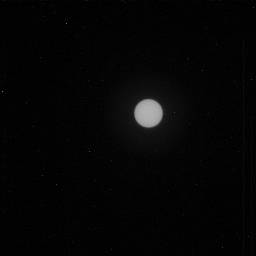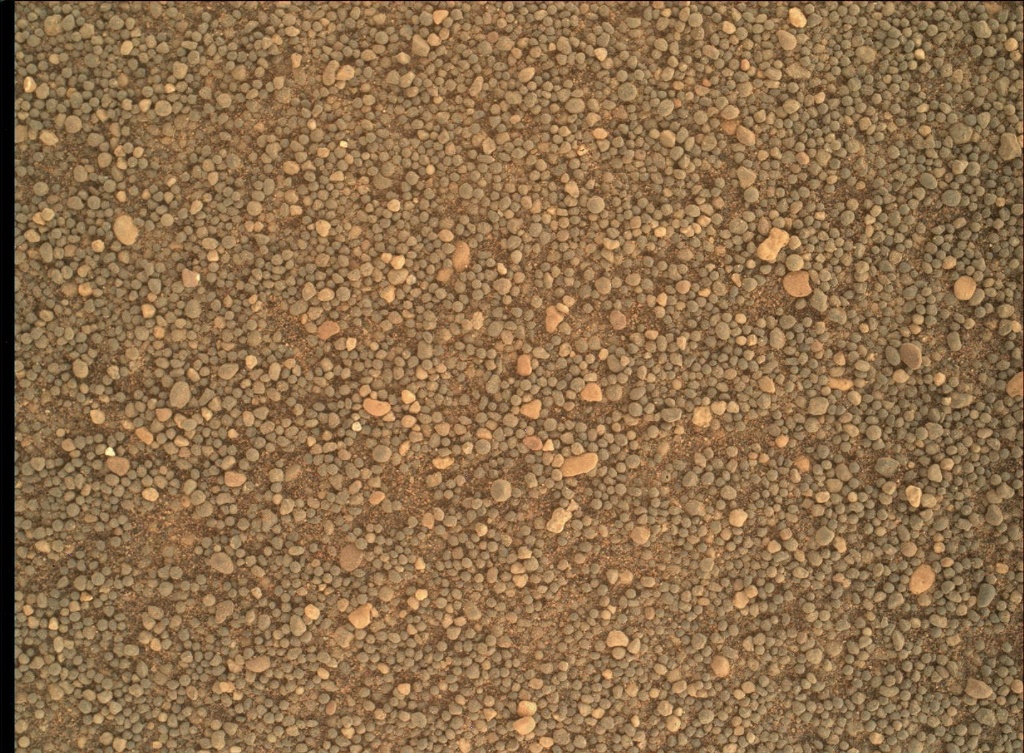May 25, 2017
Sols 1707-1708: When Mars Gives You Lemons, Calibrate Your Instruments
After a 14.6 m drive, the GEO group decided against arm activities due to a lack of compelling targets and in deference to making the next drive longer. Thusly, GEO science activities relied on Mastcam and ChemCam. On Sol 1707, ChemCam will capture a raster of the "White Cap Mountain" bedrock target (the white bedrock left of center in the bottom quarter of the above Navcam image), as well as a patch of dark undisturbed soil called "French Hill Pond." Mastcam will document all of the ChemCam targets and will image "Googings Ledge" (the large, darker bedrock just above and right of image center) and "The Twinnies" (the shadowed bedrock exposure cut off on the far left), which are sedimentary members of the Murray formation, and "Soward Island," which has exposed bedrock layers. After a planned 30 m drive, ChemCam will perform an AEGIS automated activity, and Navcam will document Curiosity's new position. SAM will perform a methane dual enrichment activity on Sol 1709, which will compare a methane-enriched atmospheric sample to a non-enriched sample.
I served in the ENV STL role, and today was one of the more hectic ENV operations days I have planned. It was a plan full of trade-offs. When SAM takes atmospheric methane or oxygen measurements, ENV likes to obtain a ChemCam passive sky observation within a few sols for an independent comparison. However, the times initially available in the plan around mid-sol to place a passive sky were not compatible with possible pointing azimuths, as we are so close to the new year (northern hemisphere spring equinox). In anticipation of potential power restrictions in the weekend plan, we attempted a long morning imaging suite a couple of sols early, which would include a passive sky measurement; however, we were forced to defer those plans due to power restrictions in the current plan. Instead of losing the science time altogether, we noticed that the mid-sol time was compatible for taking a ChemCam calibration measurement. This calibration will be taken on Sol 1708 in preparation for the next passive sky. This just proves that while doing science on another planet can be frustrating at times, it is always rewarding.
On top of the ChemCam calibration, the ENV group planned several Mastcam and Navcam observations. On Sol 1707, Mastcam will capture tau and LOS measurements to assess the amount of dust in the atmosphere. Also on Sol 1707, Navcam will capture a late afternoon zenith cloud movie. A 30-minute Navcam dust devil movie will be taken around noon on Sol 1708. REMS will capture the standard top of the hour 5 minute observations and 19 hour-long observation blocks, which will include observations during the ingest times of the SAM methane activity. DAN will take approximately 9 hours of passive and 20 minutes of post-drive active observations.


